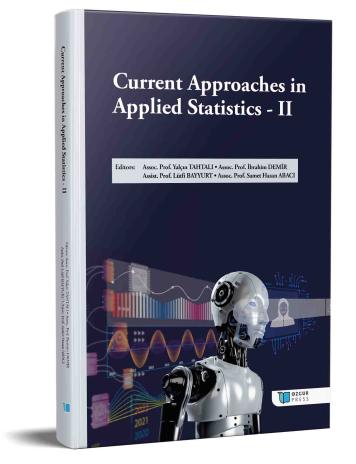
Mplus Jamovi Amos and Spss Programs in Partial Mediation Model: A Simulation Study
Chapter from the book:
Tahtalı,
Y.
&
Demir,
İ.
&
Bayyurt,
L.
&
Abacı,
S.
H.
(eds.)
2025.
Current Approaches in Applied Statistics II.
Synopsis
This study aims to investigate the performance of Mplus, Jamovi, Amos and Spss programs, which are widely used for partial mediation model, with a certain sample size and categorical data. In line with the purpose of the study, R program was used to generate data for partial mediation model. The three path coefficients of the model are pre-assigned as real values with a 0.6, b 0.7 and c path 0.3 and there is no other pre-assigned value. Sample size selection is 100, 200, 300, 400 and 500 units. In the established model, X latent variable has 4, M latent variable has 3 and Y latent variable has 5 observed variables. All observed variables have 5-categorical structure. The model was analyzed in all programs; direct effects, indirect effects and fit values were obtained. The estimation techniques of the programs are WLSMV, DWLS, ML and OLS, respectively. The closeness of the programs to the previously assigned values as performance criteria was intended to be examined. For this situation, Mean Absolute Bias- MAB and Relative Bias- RB values were used. The findings obtained were as follows. In all programs, the direct effect from the latent variable X to the latent variable Y was found to be insignificant in sample sizes of 100 and 200 units, and all other path coefficients were found to be significant. In this case, the existing partial mediation model was transformed into a full mediation model. This result indicates that the sample size of 100 and 200 units is insufficient for model studies on partial mediation relationship. While all programs had overestimation in the sample size of 100 units, underestimation was obtained in sample sizes increasing with 200 units. All programs had quite good fit values in all volumes. According to MAB and RB values, Spss indicates that its use for categorical data is problematic with its quite high deviation results. In other programs, MAB and RB values of 300 units sample were found to be good and the best performance was provided by Mplus program with WLSMV estimation technique. The next performance ranking after Mplus program was Jamovi and Amos.

